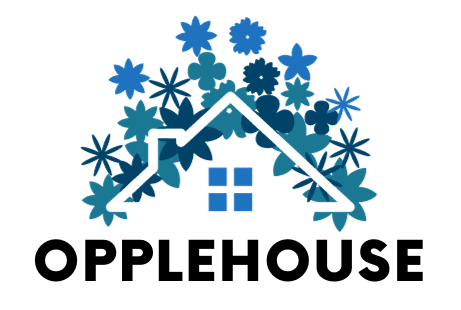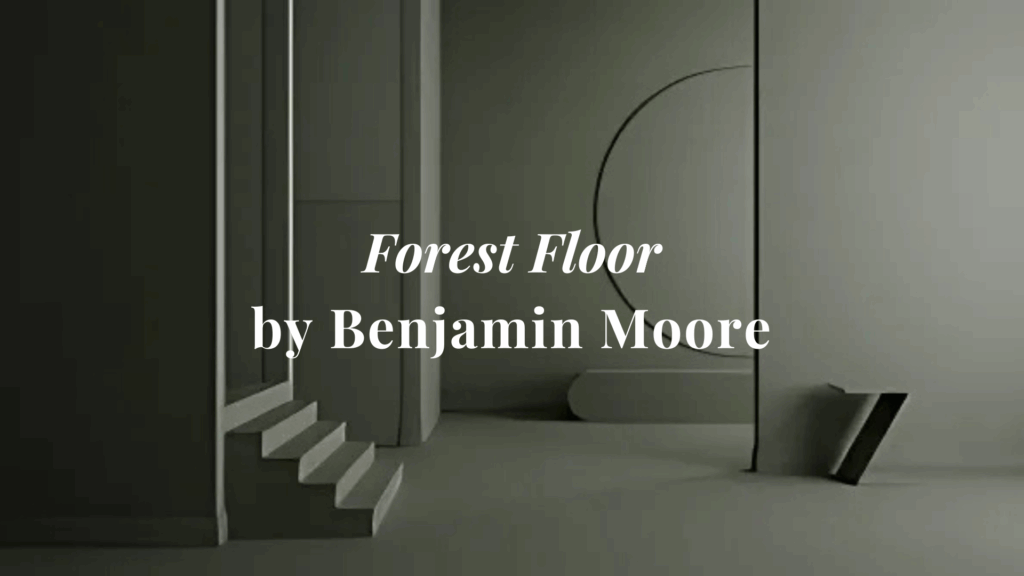If you’re looking to bring the calming, earthy tones of nature into your home, Forest Floor by Benjamin Moore is a great choice. This deep green color with hints of brown mimics the peaceful hues of a forest after a rainstorm, giving your space a grounded, serene feel.
Forest Floor is perfect for creating cozy, intimate settings, making it a popular pick for living rooms, bedrooms, and even home offices. It has a rich, organic vibe that feels both sophisticated and welcoming. The color’s depth adds warmth without feeling too heavy, and its natural tones work well with a variety of design styles.
Whether you want to create a rustic cabin look or add some earthy tones to your modern home, forest floors bring beauty and tranquility to any room. In this blog, we’ll discuss why they’re such a popular choice and how to use them effectively in your space.
Why Forest Floor by Benjamin Moore is Famous
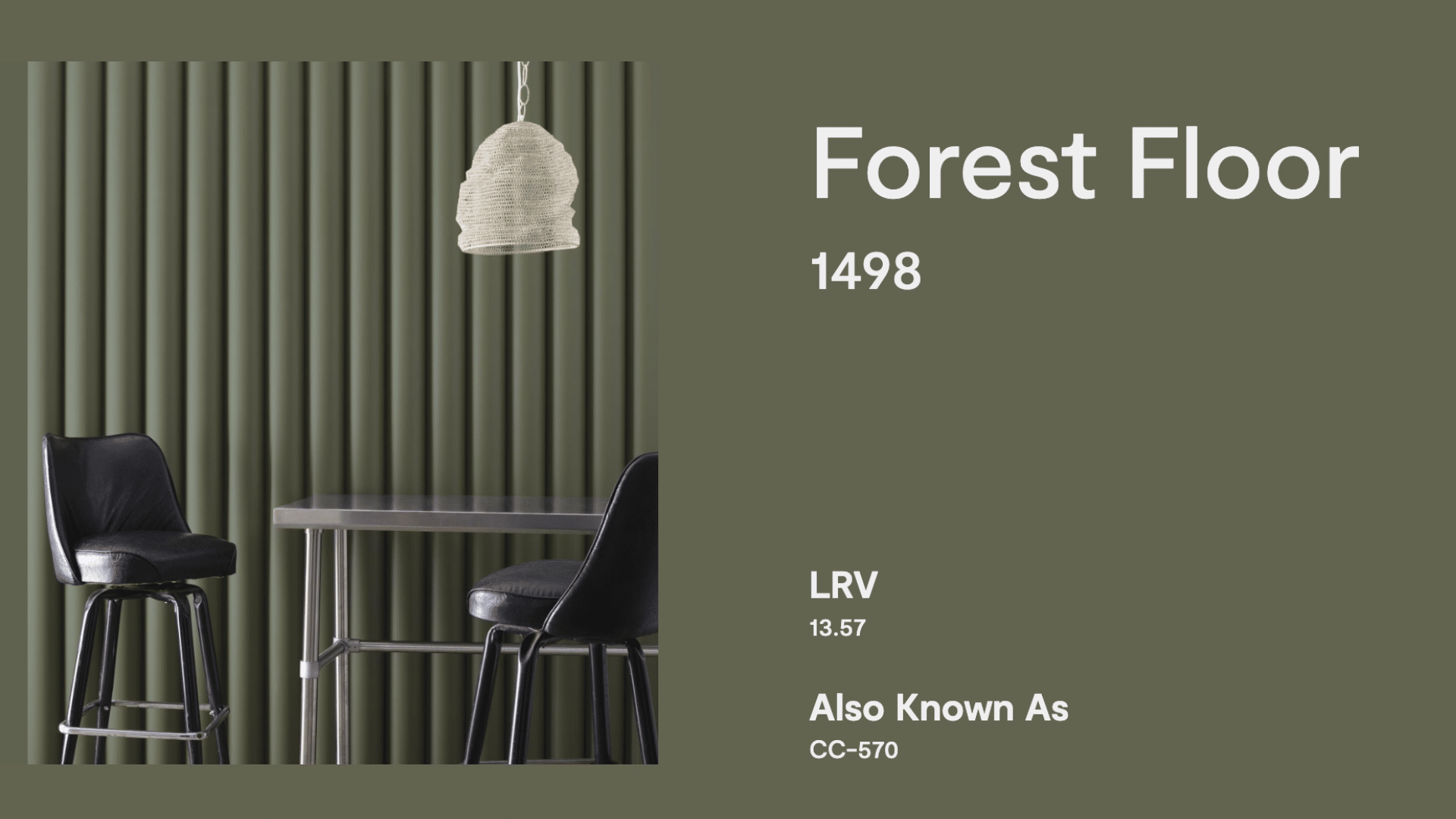
Forest Floor is a favorite because it brings the outdoors inside. This rich green with brown undertones captures the calming feel of a forest, adding a touch of nature to your home. It’s a warm and inviting color that creates a cozy, grounded atmosphere, which is why it works so well in living rooms and bedrooms.
What makes the forest floor even more special is its versatility. While it’s a bold color, it’s not overwhelming. It feels rich but still soothing, making it ideal for spaces where you want to relax and unwind. It pairs perfectly with natural materials like wood, stone, and metal, helping to create a warm, earthy vibe that’s perfect for both traditional and modern designs.
Forest floor is part of Benjamin Moore’s Color Preview Collection, a collection known for its deeper shades. If you want a color that feels organic and timeless, forest floor is the perfect choice.
Specifications of Forest Floor by Benjamin Moore
Before you start using the forest floor, here are a few key details to help you make the best decision for your home:
- Color Code: 2144-30
- Collection: Color Preview Collection
- Finish Options: Available in matte, eggshell, satin, semigloss, and more
- RGB: Red 102, Green 105, Blue 91
- HEX Code: #66695B
- Light Reflectance Value (LRV): 9.13 – A very dark color that absorbs a lot of light
- Undertones: Green with brown and earthy undertones
- Sheen Tip: Eggshell or satin works best for smooth walls and to highlight the color’s depth
These details help you understand how the color will look in your space and guide you toward the right finish for your project. Forest floor’s earthy, deep tone makes it perfect for creating a warm, inviting environment.
Incorporating Forest Floor by Benjamin Moore in Your Home
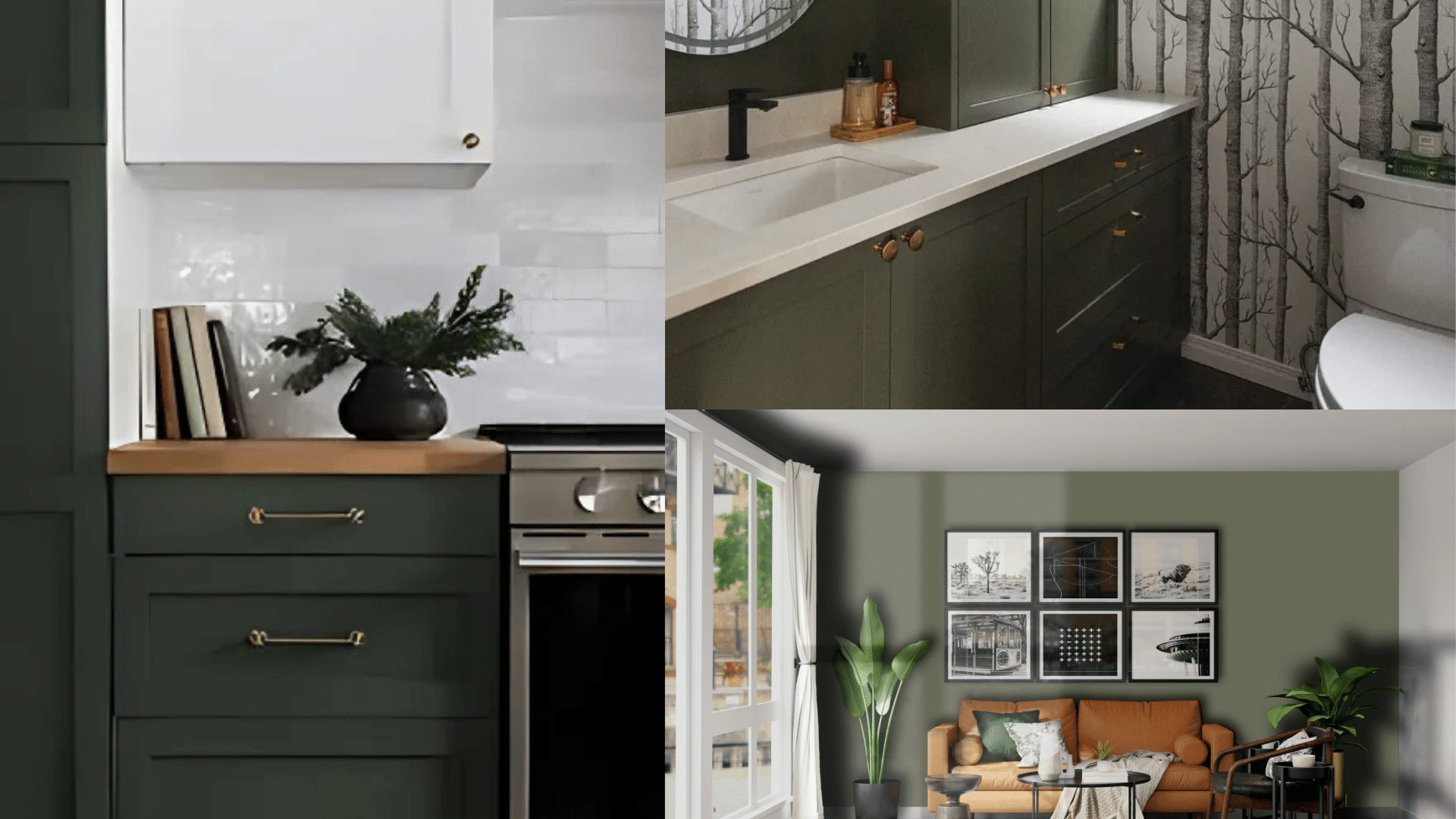
Forest floor is a rich, earthy color that can bring a sense of calm and grounded beauty to any room.
Living Rooms
Use forest floors on the walls of your living room to create a cozy, relaxed atmosphere. They pair well with light-colored furniture and warm wood accents. Add soft textures like throw blankets and cushions in natural materials to keep the space feeling inviting. You can also use them as accent walls to add depth and interest without overwhelming the room.
Bedrooms
This color works wonderfully in the bedroom, where it creates a calm, peaceful retreat. Consider using forest floor on all four walls to envelop the space in its earthy warmth, or choose it for one wall behind the bed to create a focal point. Pair it with light linens in soft whites or grays for a serene and balanced look.
Kitchens
Forest floors can add an earthy, nature-inspired vibe to the kitchen. To bring depth to your space, try them on lower cabinets, the island, or as an accent wall. They pair nicely with white countertops, natural stone backsplashes, and warm wood cabinetry. Consider adding black or brass hardware for an added touch of personality.
Accent Walls
Forest floor makes a striking accent wall color. Use it behind a sofa, in a dining room, or even in a hallway to create a bold, nature-inspired look. It’s deep enough to make a statement but still complements other colors well, allowing the space to feel balanced.
Bathrooms
For a spa-like bathroom, the forest floor can be a great choice. Use it on the vanity, accent walls, or even on the lower half of the walls to create a grounded, earthy vibe. Pair it with white or light-colored tiles and natural stone for a serene, nature-inspired atmosphere.
Forest floor works in many spaces and gives each one a warm, grounded feel. Whether you’re using it on walls, furniture, or as an accent, this rich, earthy color adds depth and style to your home.
Coordinating Colors and Design Pairings
Because the forest floor has earthy, green-brown undertones, it pairs amazingly with a wide range of colors.
- Whites and Off-Whites: Pair forest Floor with whites, cream, or light beige to create a fresh, balanced look. These lighter shades help brighten the space while providing a beautiful contrast to the rich depth of forest floor.
- Warm Neutrals: Beige, taupe, and light browns complement the forest Floor’s earthy tones. These neutral shades bring out the color’s natural feel, creating a harmonious and inviting atmosphere.
- Wood Tones: Natural wood finishes like oak, maple, and walnut pair wonderfully with forest floor. These wood tones add warmth and texture to the space, creating a cozy, nature-inspired feel.
- Muted Reds and Rusts: If you want to add a little warmth and energy, consider muted reds or rust-colored accents. These shades pair well with forest floor’s earthy undertones and create a rich, cozy atmosphere.
- Soft Blues and Greens: If you want a bit of contrast, try soft blue or green accents. These colors won’t clash with the forest floor’s natural vibe but will add extra interest to the room. Consider using soft sage green, teal, or navy blue for pillows, rugs, or curtains.
- Charcoal and Dark Grays: Dark gray tones, like charcoal, complement the deep, rich quality of forest floor. These colors create a high-end contrast, allowing the forest floor to stand out as the focal point in the room.
Forest floor’s earthy tones make it easy to pair with a variety of colors and materials, from warm neutrals to metallics, creating a balanced and inviting space.
Comparing Forest Floor with Similar Shades
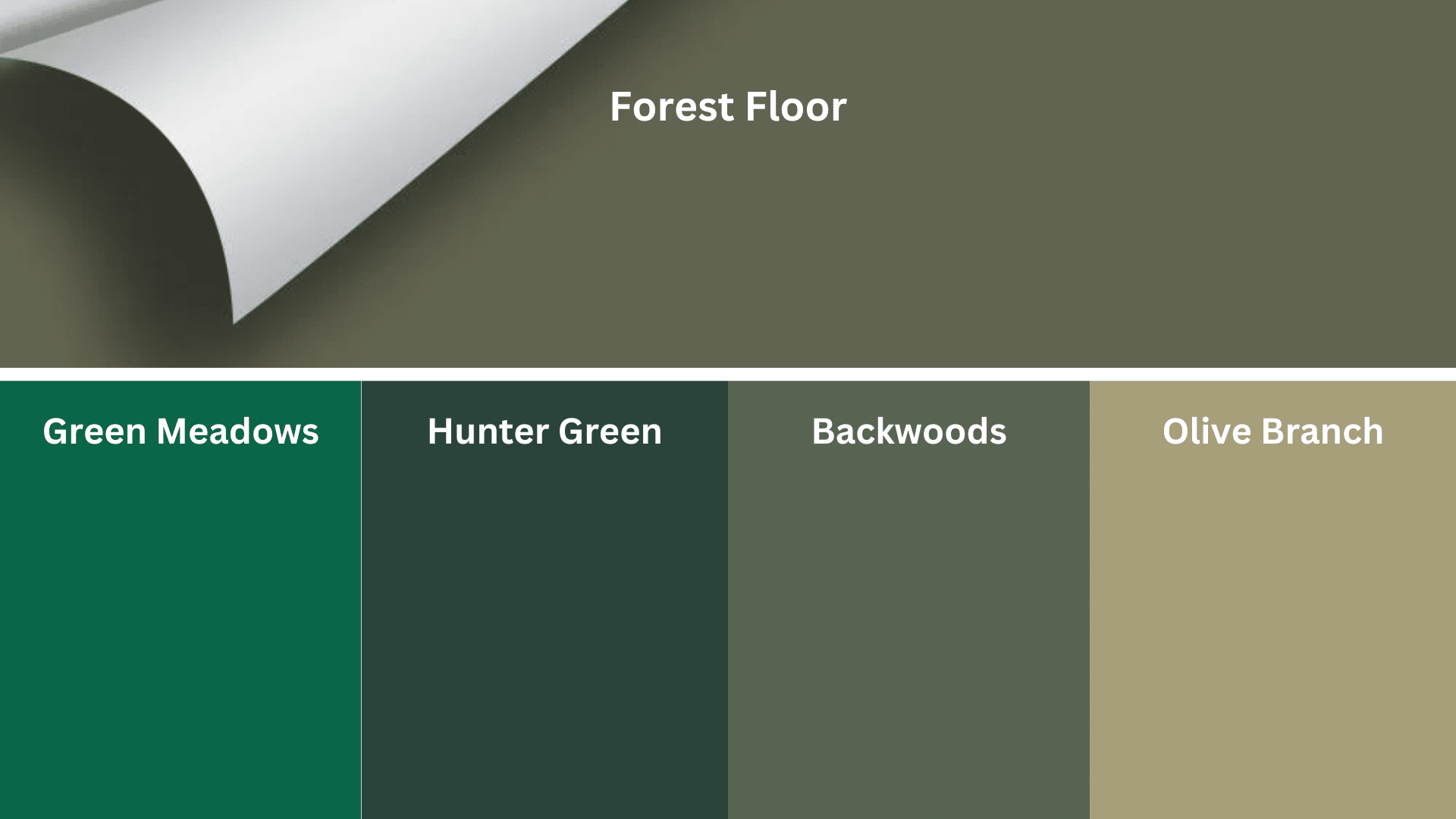
Other rich, earthy greens and browns might be similar to forest floor, but here’s how it compares to a few popular choices:
- Forest Floor vs. Green Meadows: Green Meadows is a lighter, more vibrant green. While both colors have earthy undertones, forest floor is darker and more muted, making it ideal for those who want a deeper, more subtle look.
- Forest Floor vs. Hunter Green: Hunter Green is a much darker and more intense shade of green. Forest floor, on the other hand, is more balanced with its brown undertones, making it feel softer and warmer.
- Forest Floor vs. Backwoods: Backwoods is another earthy green, but it has more yellow undertones. Forest floor leans more towards a balanced green-brown mix, giving it a richer, more neutral feel.
- Forest Floor vs. Olive Branch: Olive Branch has a yellow-green tint, while forest floor leans more toward brown and gray undertones. The forest floor’s depth and warmth make it a little more versatile in various settings.
Forest floor stands out for its depth and earthy, nature-inspired tones, making it perfect for creating warm, grounded spaces.
Reviews of Forest Floor by Benjamin Moore
Forest floor is a favorite among homeowners who want a deep, earthy color that adds warmth and character to their space. Reviewers love its ability to bring a natural, calming atmosphere into rooms like living rooms, bedrooms, and even kitchens. People often mention that the forest floor helps create a cozy, inviting feel without being too overwhelming.
Many people use it in spaces where they want to create a peaceful, grounded vibe. Some reviewers have even painted entire rooms in forest floor and noted how it made the room feel warmer and more connected to nature.
Overall, forest floor has received high praise for its versatility and calming, rich tone. It’s a color that works well in various design styles, from rustic to modern, and it consistently brings beauty and comfort to any space.
Conclusion
Benjamin Moore’s forest floor is a stunning color that brings a touch of nature into your home. With its rich, earthy, green-brown tones, it creates a calm, grounded atmosphere that works in any space. Whether you use it on walls, furniture, or as an accent, it brings depth and warmth to your home.
Forest floors pair well with a variety of colors, from whites and neutrals to rich golds and dark grays. They’re versatile colors that fit many design styles, whether you’re aiming for a rustic, cozy cabin look or a modern, stylish space.
If you’re looking for a color that combines style with nature, forest floor is a fantastic choice. It’s timeless, versatile, and perfect for creating a space that feels both inviting and peaceful.
